A Brief History of the Guitar – Where it All Began

As one of the most popular instruments today, guitars deserve a significant place in the history of music. Although a modern-design guitar dates from just a couple of centuries ago, the fact is that people started to play various kinds of string instruments a very long time ago.
The guitar’s thorough history has had its fair share of evolution. Going forward, the guitar is going to continue on this path of evolution with brands working on new technology, which will further change how the guitar is made and functions.
Experts still cannot agree about the ancestor of this beautiful instrument, though there is a kind of a consensus about some most basic things.
Contents
Ancient Times

According to written documents, people were playing different kinds of string instruments thousands of years ago. Most people would first think of an old-Greek harp-like instrument called the lyre.
However, I’m pretty sure that lyre definitely isn’t a true ancestor of guitars, as string instruments were played in older civilizations as well. Ancient Egypt, Mesopotamia, Persia, and other old civilizations left physical evidence of string instruments that look quite similar to a modern guitar.
We can see many of them in old Egyptian paintings. Moreover, you can see one of them at the Archeological Museum of Cairo. It dates from 3500 years ago and it features three strings, a long thin neck, and a nice cedarwood body.
Arabian Conquest of Spain
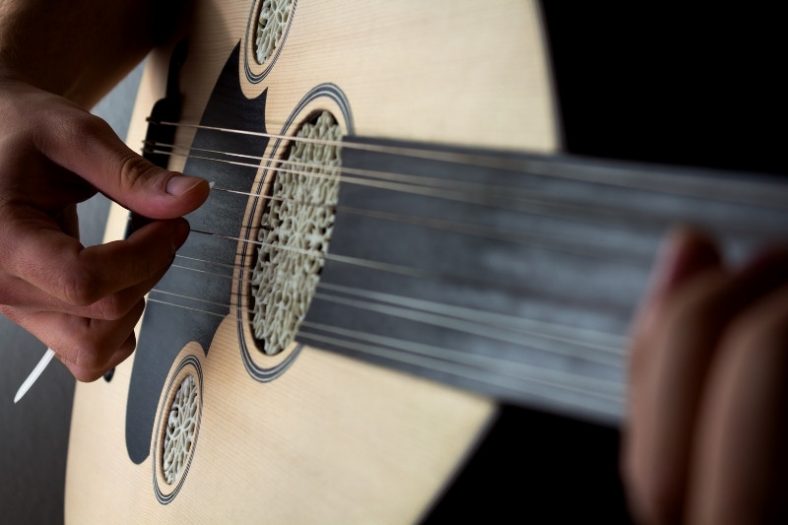
While we can debate about the original ancestor, there is no doubt that today’s guitars have evolved from an instrument that is known as Oud. This instrument probably originates from Persia. The Oud is a fretless, short-neck string instrument that dates back a long time. Some historians claim that the original design features just three strings.
However, things changed a lot once the Arabs came. They made it more versatile, as it usually featured 11 or 13 strings, in 5 or 6 courses. Such an instrument was brought to the Iberian peninsula in the 8th century, where it remained unchanged for hundreds of years.
Rennaisance Period
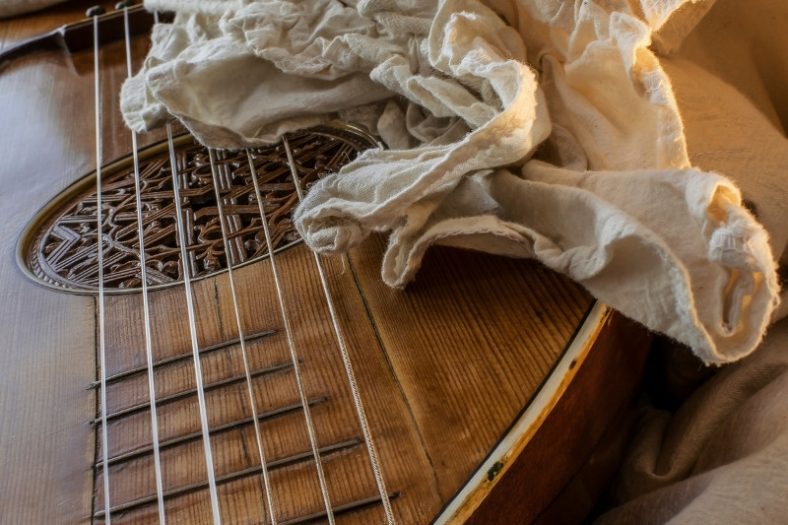
Moors have brought Oud to Spain and once Europeans came in touch with it, they started with modifications. A lute is by far the best-known derivate and we can agree that it had a critical influence on the instrument that will several centuries later become a guitar.
The overall shape of the lute wasn’t much different. On the other side, the neck became fretted, which is something that separates guitars from most other string instruments.
At the same time, the guitar started to get today’s shape. Many medieval paintings show instruments that feature guitar-like curves.
Until the 16th century, these instruments usually featured four-course designs, with eight coupled uni-tuned strings. The interesting fact is that even at that time, this instrument usually featured E, B, G, D tuning, which matches the first four strings of a modern six-string guitar.
The first written piece for such an instrument dates from the 16th century. At the same time, five-course guitars appeared as well. Just like lutes, these guitars also usually had eight frets to the body.
As the skills of musicians were becoming better, later designs included 10 or 12 as well. By the 17th century, such designs became popular across the whole of Europe, so we can find even some works from the famous Italian violin builder Antonio Stradivarius.
Modern Guitar
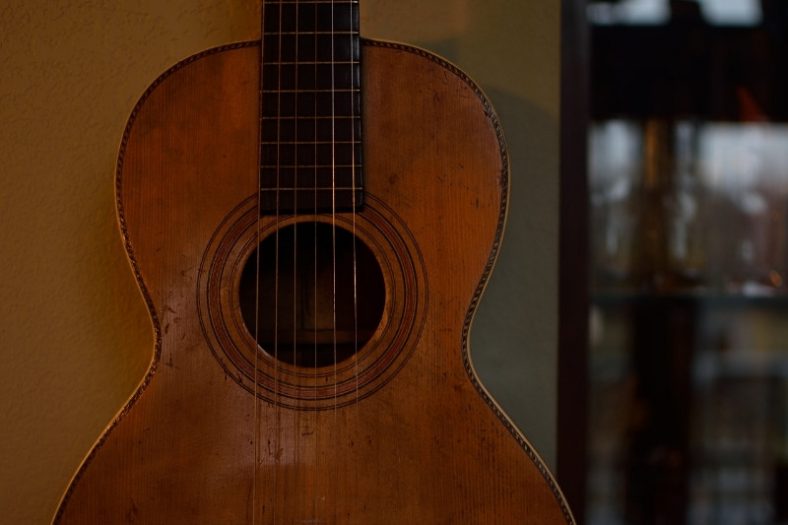
Soon after, a six-string course became dominant. However, the body was still narrow and small. In the 1800s, guitar builders were still experimenting with different sizes and bodies. One of the first designs that resemble today’s guitar shape was introduced in 1832, by George Louis Panormo.
Finally, the guitar gets today’s form sometime in the 1850s. The legendary builder Antonie Torres Jurado came up with a revolutionary fan top design and a bigger body. From that time, the dimensions and overall design of a classical guitar haven’t changed to this day.
Western Guitar
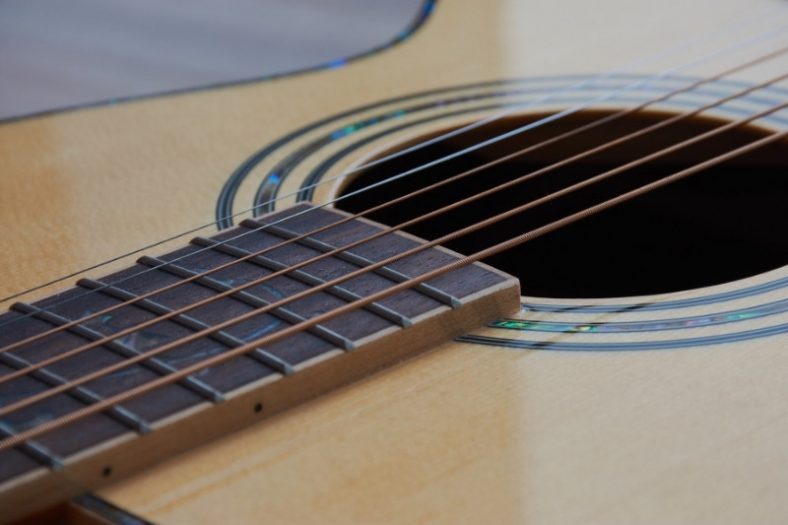
Western is the most popular type of guitar these days. Its development started pretty much at the same time as the classical guitar was getting its final shape, which means during the 19th century.
As its name says, it was developed in the west, in North America, by German immigrants. These guitars became widely popular by the early 1900s. There are some notable differences between classical and western guitars.
The first thing that comes to mind is strings. Instead of nylon, western guitars feature steel strings. Such design required a couple of different design solutions, as steel strings create much more tension.
So, instead of Torres’ fan top design, western guitars of that time featured X-braced tops. Such design is predominant even these days, though numerous variations are used today, including an interesting “hybrid” design that combines X and classical fan bracing.
Archtop Guitar
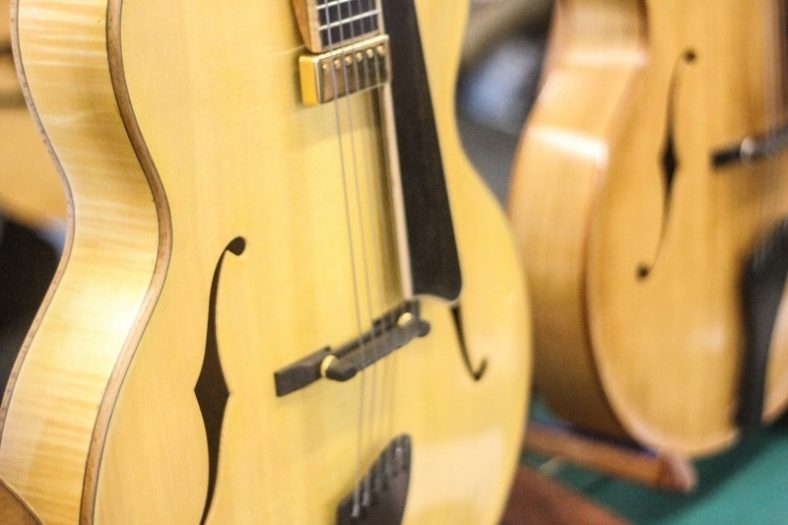
In the early 1900s, another design appeared. This design is usually credited to Orville Gibson, who introduced a new type of acoustic guitars, which features different top compared to classical and western guitars.
Per its name, this one features an archtop, which is usually made from a thick plank. You can easily notice a fine arch in the middle of the body, which gently dips down to meet the sides of the body. Such a design requires a lot of fine craftsmanship, so the price is usually much higher.
First archtop guitars usually featured a typical oval hole in the middle. However, F-holes are predominant these days. Archtop guitars can be either acoustic or semi-acoustic.
Electric Guitars
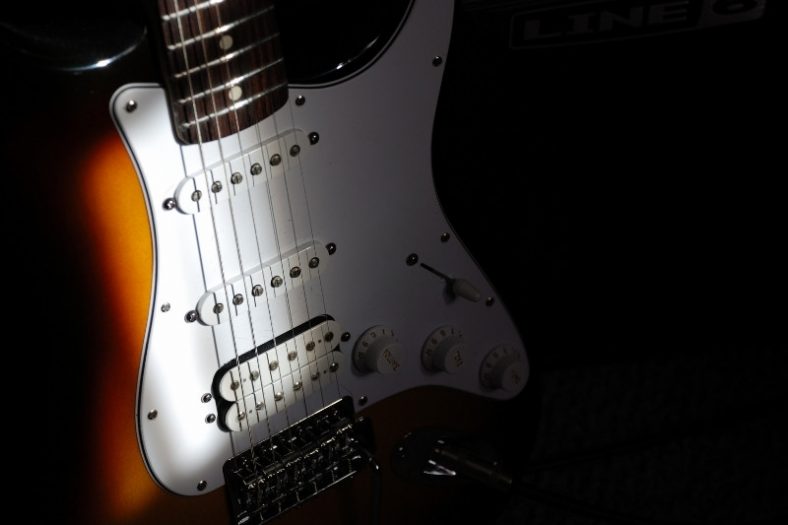
By the 1920s, guitars became an integral part of a jazz orchestra. However, it was a little bit challenging to get enough loudness from an acoustic guitar, as the same bands and orchestras were full of super-loud brass instruments, drums, etc.
Therefore, engineers and guitar builders start to experiment. In 1924, Lloyd Loar introduced a pickup for viola and string bass. Soon after, others came up with their designs as well. George Beauchamp and Adolph Rickenbacker introduced their “Frying Pan” in 1932 and it was the first instrument of this kind that had commercial success.
A real breakthrough happened several years later, with the model called Gibson ES150 and Charlie Christian, who is probably the first musician with a distinctive, electric guitar playing style. A couple of decades brought numerous iconic hollow-body designs which are hugely popular even these days.
Solid-Body Electric Guitars
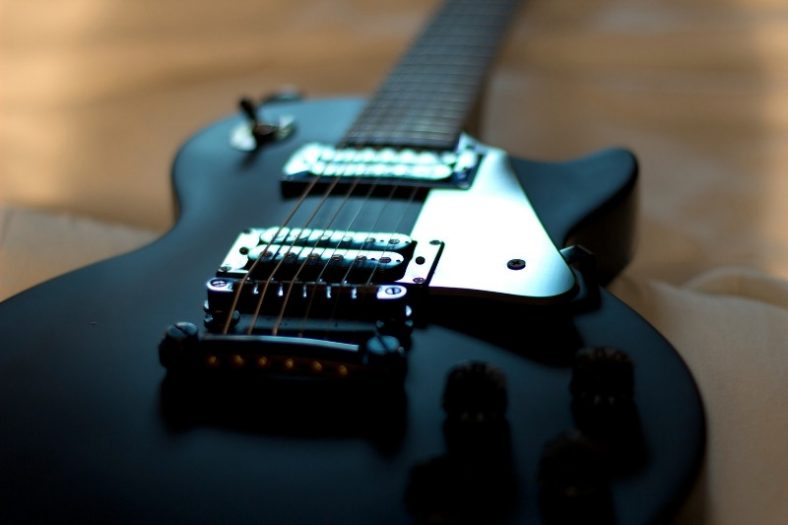
With the evolution of pickups and amplifiers, guitar builders were trying to find a way to make cheaper instruments. As a product of their engineering, a solid-body guitar appeared in the late 40s and early 50s. Legendary builders like Leo Fender, Paul Bigsby, and Les Paul constructed the first guitars of this type at the time.
One of the first solid-body guitars came in 1948. The prototype was named Esquire, but it was renamed Broadcaster for serial production. Soon after, it was renamed once again, to Telecaster, which is one of the most iconic electric guitar models of all time, hugely popular even today.
We saw a plethora of legendary models in the following years. The two most iconic electric guitars of all time, Gibson Les Paul and Fender Stratocaster came soon after, in 1952 and 1954, respectively.
Further Development
Since the 50s, the base design of electric guitars hasn’t changed too much, though there are some small but notable modifications. During all these years, guitarists were getting better and better, which initiated some new, very interesting design solutions.
A tremolo bar was a pretty common thing already in the 50s. A few decades later, engineers came up with a new bridge design, called Floyd rose, which has brought a whole new spectrum of possibilities, when it comes to sound variations.
Meanwhile, metal genres were becoming more aggressive and some of the main characteristics of various sub-genres are low bass notes. Drop tunings weren’t enough anymore, so seven-string guitars appeared in the 90s.
The first one came from Ibanez in 1994. These days, 8-string guitars are a common thing in the market as well. Be sure that the evolution of this instrument will carry on.
As time goes on, musicians are discovering new playing techniques and getting new preferences, which definitely have a big influence on guitar constructors and we have no doubt that they will come up with some brand-new design solutions in the near future that will change this instrument even more.
Summary
The history of the guitar has been a long and interesting experience, with its fair share of evolution. We’ve seen the guitars move from acoustic to electric, and then back again.
They evolved in their features as well, with new instruments emerging that weren’t around before, like 8-string guitars. And many others changed too including tremolo bars, pickups, bridges, and tunings. As time goes on, the list of modifications on guitars will continue to grow.
However, this look back at the history of the guitar has only just touched on what’s happened over time. It’s truly amazing how far the design for this instrument has come.
From their basic form to what we know them to be today, guitars have certainly evolved greatly. And we’re sure that they will continue to change in the future, as long as musicians continue to create and build upon what’s already happened.





